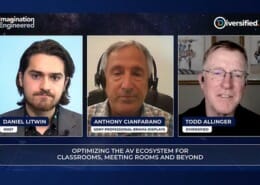BLOG
Adaptive Learning
Tranforming to your next normal in education
Almost 26 million higher education students and 55 million K-12 pupils have been impacted by the move to distance learning in 2020. The COVID-19 global pandemic has forever changed the way we teach and learn. Educators have spent the better part of the year rethinking and reshaping the education model–for today and for the future. With almost half a year’s experience of teaching and learning in ‘new normal’ conditions, we are better informed to make the transition to the ‘next normal’ environment in education.
Today, with a still indeterminate future, facilities are carving their own paths, at their own discretion, to determine the best model forward for them. Some are retaining complete distance learning for all students. Some are bringing students back to the classrooms, albeit reorganized to adhere to social distancing requirements. Many are deploying a mixture of both in-person and distance learning. Each institution is looking within to find the best approach for their staff and students.
Whether in-person, virtual or a hybrid education model, the technology that underpins teaching and learning success in the ‘next normal’ is video. Already a fundamental teaching aid in the past two decades, with increased acceptance of the evidence-based benefits of video in digital classrooms, video was undoubtedly the future of education. While institutions had already taken their first steps towards virtual learning, 2020 has moved video adoption leaps and bounds towards fully supported digital classrooms. Video is the key to inclusivity and accessibility in education, powering collaborative, engaged learning, and effective, innovative teaching.
We have seen and experienced the massive shift in not just the equipment we use, but how we can best harness technology to transform education in the ‘next normal’. Not only is it important to provide your education institution with the right gear, but even more critical is guidance on how to transition to your next learning model.
It comes down to the power of three. Maintain. Adapt. Innovate. Maintain what is working and what can and should stay the same. Adapt the way you facilitate existing structures that are important to you to meet social distancing, hygiene and safety requirements. Most importantly, innovate. The pace of innovation in education is rapid and it is vital to keep up with emerging trends to ensure the best possible experience for your students and teachers.








